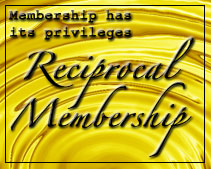History of Baguio City, about 3 hours from Clark, Philippines
January 31, 2011
The area now known as Baguio City was first called Kafagway and occupied by the Kankaney and Ibaloi tribes of the Cordilleras.
Spanish Occupation.
During their occupation of the Philippines, the Spanish colonizers conducted a series of expeditions, led by Juan Salcedo in 1572 and Don Q.M. Quirante in 1694 to the cool mountains of Benguet.
A series of failed attempts to conquer the natives were made until foothold was finally gained by Commandante
de Galvey in 1846, when he was able to establish a commandancia or military garrison in a beautiful stretch of fertile flat land.
This he named after his wife, and is now known as La Trinidad. Galvey went on to establish the province of Benguet with 31 ‘rancherias’ (camps or rural settlements). The area known as Kafagway was then a small rancheria composed of about 20 houses. La Trinidad remains the capital of Benguet province to this date.
The ‘presidentia’ (civil government) was first established in the Guisad Valley area. It was later moved to the present site of the Baguio City Hall.
One of the notable contributions of the Spanish era was the introduction of coffee, of the arabica variety, which is still grown in this area and known as Benguet coffee.
American Occupation.
When the Americans came to Baguio, after Spain ceded the Philippines to the United States of America for $20,000.00, they found the pine-covered hills and the cool heights ideal for retreats from the sweltering heat of the lowlands. In a supreme feat of engineering feat they carved Kennon Road, from the mountains surrounding the Bued River Canyon, connecting Kafagway to the Pangasinan and Ilocos lowlands.
Early in 1900 the Americans established their government with H. Phelps Whitmarsh as the first civil governor appointed for the first provincial government established in the Philippine Islands, Benguet. At that time, the Philippines was still under the U.S. Military Government.
Baguio was then the capital of Benguet, and the American’s best administrators and teachers were fervent boosters and promoters: Worcester, Wright, Forbes, Pack, Barrows, Eckman and others who together with Filipinos committed to make the place a virtual heaven on earth.
Baguio was set up as both a mining town and a recreational facility. The mountains surrounding Kennon were mined with camps erected from the base to the plateau that Baguio sits on. In 1903, Camp John Hay was developed for the rest and recreation of the U.S. Armed Forces.
Baguio City was designed by premier American architect and urban planner Daniel H. Burnham, who also master-planned Chicago’s One Magnificent Mile and Manila’s Roxas Boulevard. American missionaries came and “Christianized” the natives and English became the lingua franca.
On September 9, 1909, Baguio was declared a chartered city and the “Summer Capital of the Philippines” with The Mansion as the residence of the American governor-general during the summer to escape Manila’s heat. The Philippine Commission held it’s session in Baguio City, in the area on top of what is now known as Session Road.
Japanese Occupation.
After the Japanese attacked Pearl Harbor, the war in the Pacific broke out, and the Philippines, being the only colony of the United States became a prime target. The Japanese bombed Baguio on December 8, 1941 and occupied it on December 27 of the same year, setting up their headquarters at Camp John Hay.
However, the war eventually changed course and on September 3, 1945, General Yamashita formally surrendered to the Americans at the US Ambassador’s residence in Camp John Hay, after which, Baguio immediately set to the task of rehabilitation.
Philippine Independence.
When the Philippines was granted independence in 1946, Baguio City continued to be the Summer Capital of the Philippines, with Camp John Hay being retained by the Americans under the RP-US Bases Agreement.
During summers, the whole of the Philippine Government conducted its business in Baguio City, a tradition that is continued today only by the Philippine Supreme Court. This partly accounts for the ownership of a lot of beautiful vacation homes by the country’s oldest families in areas like Leonard Wood Road, Park Drive and South Drive.
Most of the prime property in Baguio City is owned by the national government: Cabinet Hill, Engineer’s Hill, Supreme Court Compound, Court of Appeals Compund, Comelec Compound.
Baguio was the Philippines’ top tourist destination from 1946 until July 16, 1990, when an earthquake destroyed many of the city’s buildings. The city was quickly rebuilt and all traces of the tragedy removed. Camp John Hay was turned over to the Philippine Government on July 1, 1991 simultaneously with the turnover of all U.S. Bases in the Philippines, and was, in turn, awarded to a private developer in 1997 on a long-term lease contract.
Today, Baguio City is the seat of the Cordillera Administrative Region (CAR), composed of the provinces of Benguet, Ifugao, Kalinga, Apayao and Mountain Province, and remains the Summer Capital of the Philippines.
Are these articles useful for enhancing your wine and dine experience in the Philippines. Do they also help you with travel, leisure, vacation, dining out, nightlife and other leisure activities plans in Manila and other major cities of Philippines? Yats Restaurant hopes to provide you with ample information so you can plan your trips to Pampanga Angeles City Clark Freeport Zone whether you are travelling from Manila or other Asian countries such as Hong Kong, Shanghai, Singapore, Malaysia or Korea.
Restaurant reservations in Manila Philippines, planning of menu, selection of wine for dinner and booking a private function and event in Angeles City Clark Freeport Zone can all be handled. Yats Restaurant and Wine Bar has been regarded by many to be the premier restaurant north of Manila Philippines. Its 3000-line award-winning restaurant wine list has kept many wine lovers happy dining in this restaurant in Angeles City Clark Philippines for over a decade.
Yats Restaurant and Wine Bar was built by Hong Kong-based Yats International in 2000 to provide a world-class cozy fine dining restaurant, business meeting facilities and venues for private dinners and functions in Pampanga Angeles City Clark Freeport Zone. Pampanga Angeles City Clark Philippines was selected for this restaurant because of safety, clean air, absence of traffic and proximity to Manila and Subic.
For comments, inquiries and reservations, email Restaurant@Yats-International.com or call these numbers:
(045) 599-5600 0922-870-5178 0917-520-4401
Http://www.YatsRestaurant.com
Getting to this fine dining restaurant of Angeles City Clark Freeport Zone Pampanga Philippines
How to get to this fine-dining restaurant in Clark Philippines? Once you get to Clark Freeport, go straight until you hit Mimosa. After you enter Mimosa, stay on the left on Mimosa Drive, go past the Holiday Inn and Yats Restaurant (green top, independent 1-storey structure) is on your left. Just past the Yats Restaurant is the London Pub.









